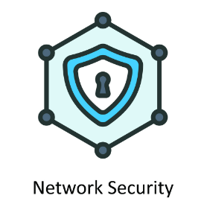What you will learn
- Understand the principles and importance of network security
- Implement firewalls and intrusion prevention systems for access control
- Configure and manage Virtual Private Networks (VPNs)
- Enforce Network Access Control policies for endpoint security
- Implement secure communication protocols and services
- Configure and secure routers, switches, and other network devices
- Develop and execute incident response plans for network security incidents
Beneficial for
- Network Administrators
- Security Analysts
- IT Managers
- System Administrators
Course Pre-requisite
- Basic understanding of networking concepts
- Familiarity with IT and cybersecurity principles
- Enthusiasm for securing computer networks is key.
Course Outline
Understanding the importance of network security
Overview of network security principles and goals
Legal and regulatory considerations for network protection
Reviewing common network architectures
Security models for perimeter and internal network security
Defense-in-depth and layered security strategies
Implementing firewalls for traffic filtering and access control
Configuring intrusion prevention systems for real-time threat detection
Best practices for firewall rule management and optimization
Implementing VPNs for secure remote access
Site-to-site VPNs for secure interconnection of networks
Choosing encryption protocols and authentication methods for VPNs
Implementing Network Access Control policies
Enforcing endpoint compliance and security posture
Integration of NAC with other security technologies
Securing wireless networks with encryption and authentication
Best practices for secure Wi-Fi deployment
Monitoring and mitigating wireless security threats
Implementing secure communication protocols (e.g., HTTPS, SSH)
Securing network services and protocols (DNS, DHCP, etc.)
Best practices for securing common network applications
Configuring and securing routers and switches
Network device hardening and best practices
Secure configuration of network infrastructure components
Developing and implementing an incident response plan for network security incidents
Network traffic analysis and intrusion detection
Legal and regulatory considerations during a network security incident
Evolving challenges and trends in network security
Zero Trust Networking principles and implementations
Future considerations for securing networks in dynamic environments

